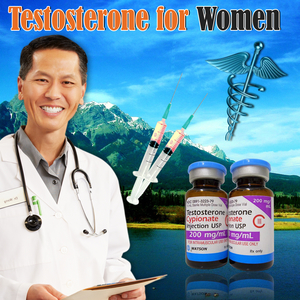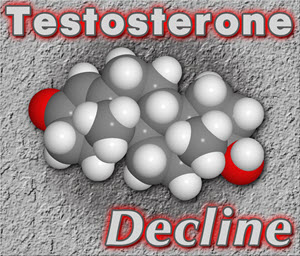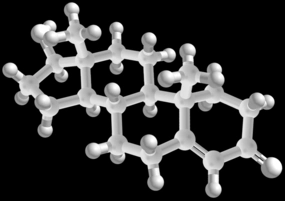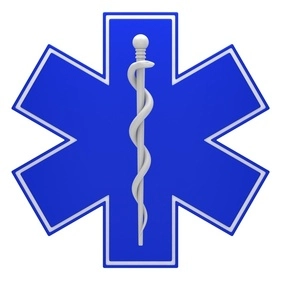Reading Time: 2 minutesIntroduction Lower urinary tract symptoms (LUTS) are prevalent among men, particularly as they age, and can significantly impact quality of life. Hypogonadism, characterized by low testosterone levels, has been associated with an increased risk of LUTS. Recent research has explored the potential of urinary exosomal microRNAs (miRNAs) as biomarkers for diagnosing and monitoring treatment responses in hypogonadal men with LUTS. This article delves into the significance of these biomarkers and their implications for urological care in American men. Understanding Hypogonadism and LUTS Hypogonadism, a condition marked by insufficient testosterone production, is not uncommon among American men. It is associated with … Read more
- About Escitalopram (65)
- Androderm Testosterone Transdermal Patch (51)
- Androgel Gel Formula (51)
- Andropause (184)
- Andropause Medical Research (52)
- Aveed Endo Pharmaceuticals Injectables (51)
- Blog Testosterone (3)
- Boosting Low Libido (65)
- Diets (31)
- Drugs (9)
- Endocrinology Men's Therapy (60)
- Endocrinology Scientific Research (52)
- Erectile Dysfunction Medicine (72)
- Fitness Training (65)
- Fortesta Transdermal Medicine (51)
- Genotropin HGH (61)
- Hair Loss Causes (65)
- Hcg Injections (4)
- Hormone News (41)
- Hormone Therapy Review (54)
- How To Inject Hormones (2)
- Hrt Fitness And Exercise (5)
- Human Growth Hormone (19)
- Human Growth Hormone Clinic (2)
- Human Growth Hormone Medication (71)
- Humatrope HGH (60)
- Hypogonadism Management (175)
- Hypopituitarism Management (60)
- Impotence Management (71)
- Injectable Delatestryl Endo Pharmaceuticals (51)
- Injectable Depo Testosterone Pfizer (51)
- Ipamorelin Research (71)
- Is It Low T (16)
- Jatenzo Oral Medicine (50)
- Kyzatrex Oral Pills (50)
- Labcorp Blood Testing Centers (1,809)
- Late-onset Hypogonadism Medical Science (52)
- Low Testosterone (242)
- Low Testosterone Medical Science (52)
- Male Fertility (7)
- Male Health (2)
- Male Sexual (3)
- Men's Health (15)
- Men's Health Medical Research (52)
- Natesto Gel Testosterone (51)
- Norditropin HGH (60)
- Nutropin HGH (60)
- Omnitrope HGH (60)
- Online Pharmacy (1)
- PDE5 Inhibitors And ED Treatment (71)
- Penis Health (53)
- Penis Shrinkage Causes (71)
- Premature Ejaculation Solutions (71)
- Primary Hypogonadism Scientific Research (52)
- Prostate Health Research (52)
- Quest Blood Testing Centers (1,325)
- Saizen HGH (60)
- Scientific Breakthroughs In Peptides (65)
- Secondary Hypogonadism Medical Science (52)
- Semaglutide Treatments (70)
- Sermorelin Therapy Highlights (71)
- Serostim HGH (60)
- Sexual Dysfunction Causes (60)
- Soft Erection Research (71)
- Sports Medicine Science (52)
- Stendra Avanafil Therapy (71)
- Striant Testosterone Buccal System (50)
- Tamoxifen Therapy Insights (65)
- Testical Science Medical Research (52)
- Testim Transdermal Gel (51)
- Testosterone And Cancer (2)
- Testosterone Clinics (408)
- Testosterone Cream (37)
- Testosterone Cypionate (66)
- Testosterone Cypionate Research (52)
- Testosterone Deficiency Syndrome Research (52)
- Testosterone Enanthate Medical Research (52)
- Testosterone Gel (96)
- Testosterone Information (1,294)
- Testosterone Injections (54)
- Testosterone News (34)
- Testosterone Propionate Medical Science (52)
- Testosterone Replacement For Men (6)
- Testosterone Replacement Therapy (149)
- Testosterone Replacement Therapy Medical Science (52)
- Testosterone Therapy (12)
- Testosterone Undecanoate Research (52)
- Testsoterone Androgen Hormones (71)
- Tlando Oral Tablets (47)
- Urology Insights For Men (60)
- Urology Medical Science (52)
- Viagra For Erectile Dysfunction (71)
- Vogelxo Transdermal Gel (51)
- Testosterone Undecanoate: Benefits and Considerations for American Men’s Reproductive Health
- Testosterone Enanthate’s Impact on Liver Health in American Men: Risks and Monitoring
- Sports Medicine’s Vital Role in Enhancing American Male Swimmers’ Performance and Health
- Tamoxifen’s Endocrine Effects on American Male Breast Cancer Patients: Insights and Management
- Primary Hypogonadism: Impacts and Family Planning Strategies for American Males
Free Testosterone Consultation
Our Staff
* U.S. Citizens 30 Years of Age of Older Only*
Testosterone Products
HRT Health Categories
Testosterone Fit And Healthy
Recent Posts
Therapy Benefits
Testosterone Molecules For Health Solutions
Five Surprising Testosterone Benefits:
HGH Specialists In Testosterone Therapy
Call Us Today
Medical Forms
Testosterone Therapy
Medical Excellence
Testosterone Decline























